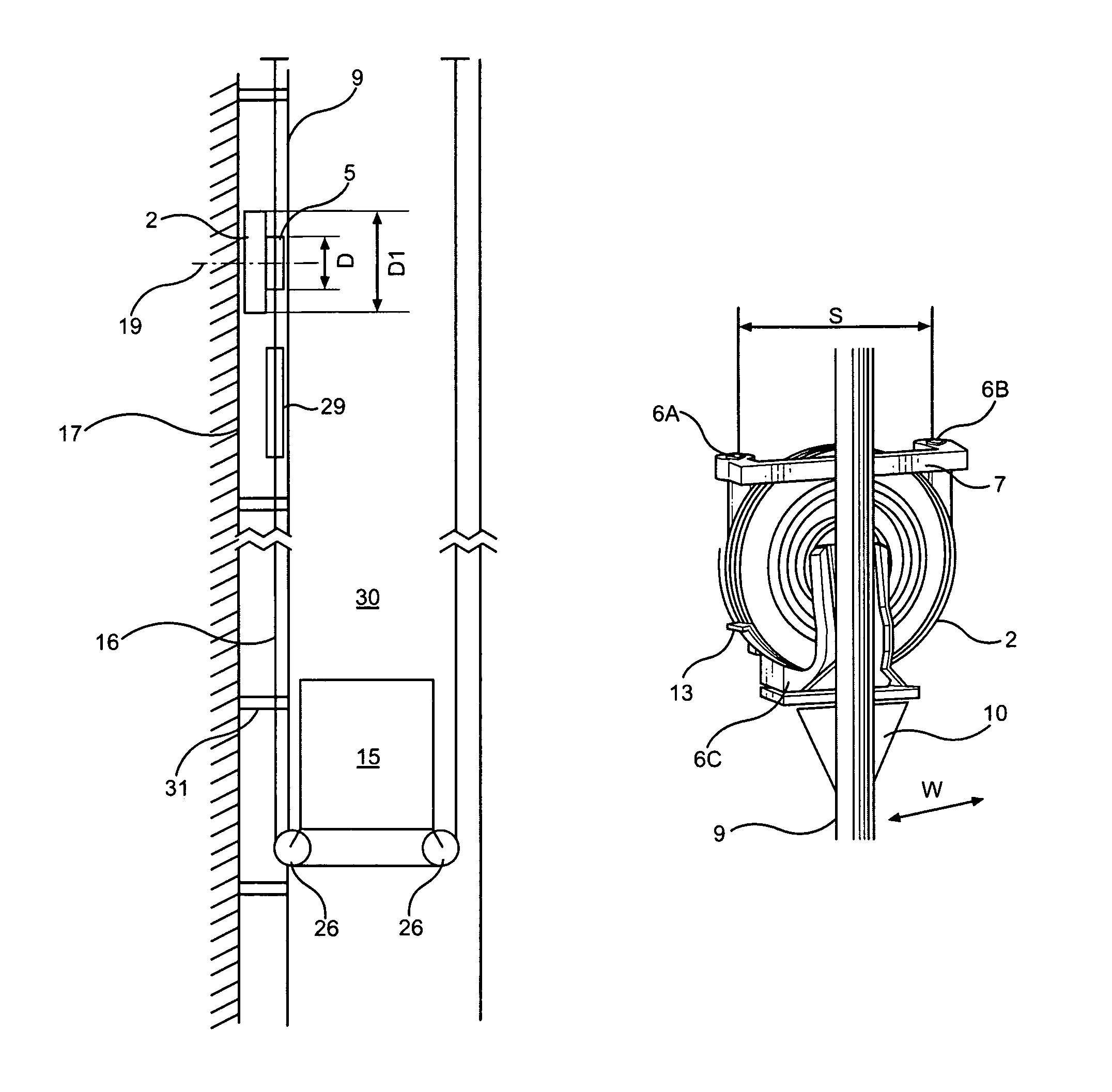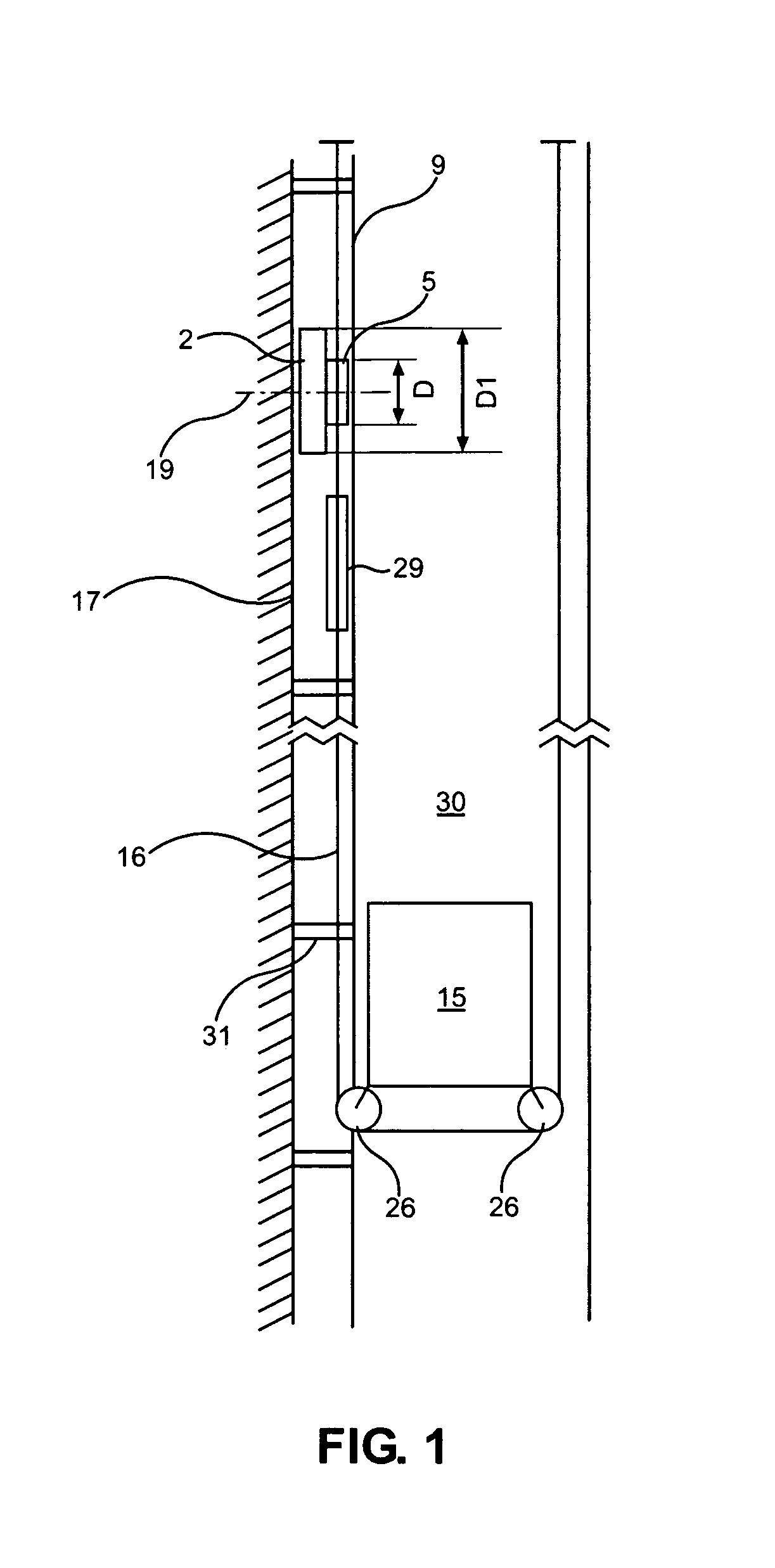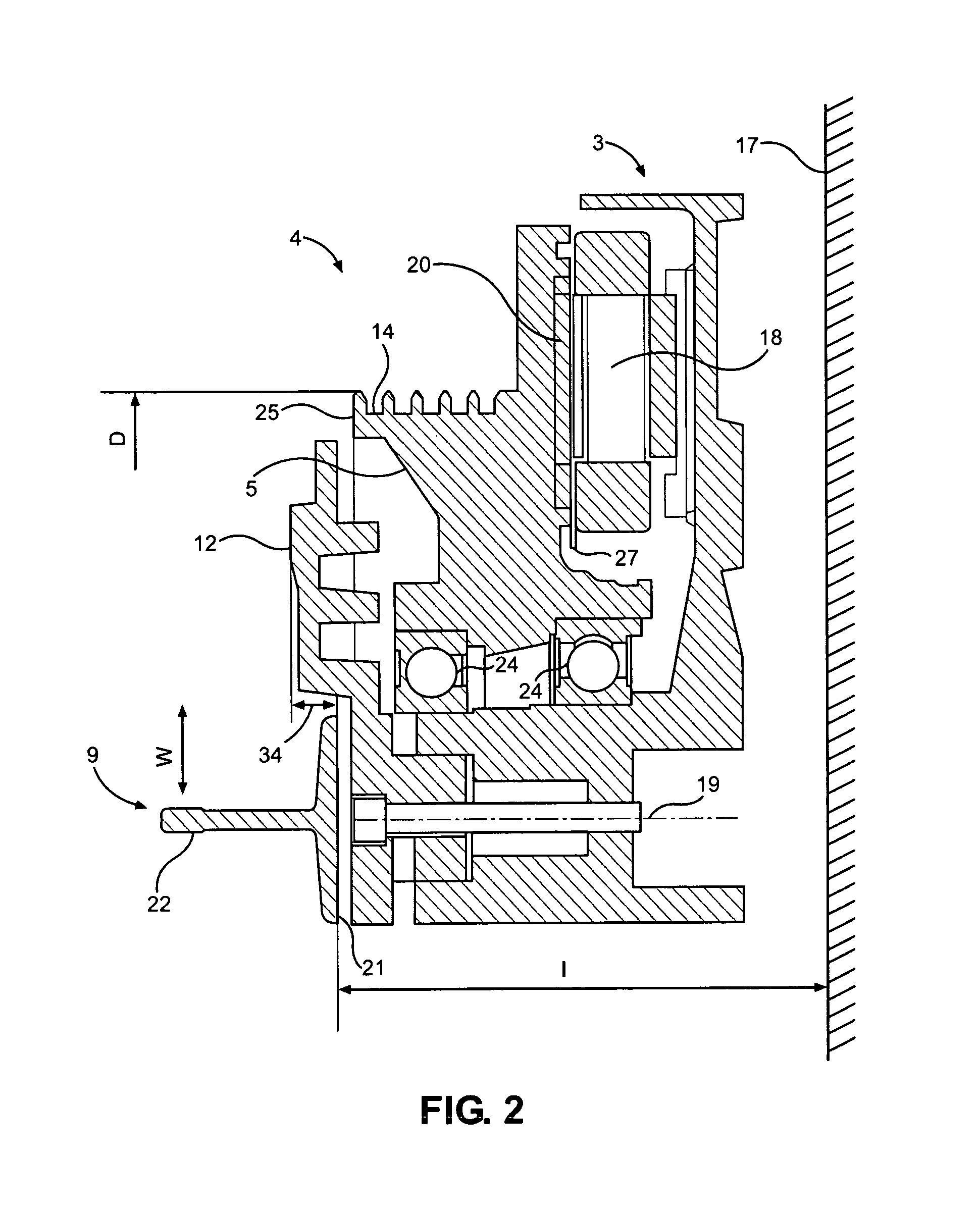Fixing arrangement for a hoisting machine, and elevator assembly
a technology for fixing solutions and hoisting machines, which is applied in the direction of elevators, magnetic circuit rotating parts, and shape/form/construction of magnetic circuits, etc. it can solve the problems that the hoisting machine is not easily able to bend around the longitudinal axis of the support structure, and achieve the effect of increasing the rigidity reducing the size of the hoisting machine, and maximizing the efficiency of space utilization
- Summary
- Abstract
- Description
- Claims
- Application Information
AI Technical Summary
Benefits of technology
Problems solved by technology
Method used
Image
Examples
Embodiment Construction
[0031]FIG. 1 presents as a block diagram an elevator assembly, in which the elevator car 15 and the counterweight 29 are suspended in the elevator hoistway 30 with suspension ropes 16. The elevator car 15 is moved with the hoisting machine 2 of the elevator, said hoisting machine being disposed in the top part of the elevator hoistway 30, along a guide rail 9 fixed to a wall part 17 of the elevator hoistway by exerting a force effect on the elevator car with hoisting ropes 16 traveling via the traction sheave 5 of the hoisting machine 2 of the elevator. On the surface of the traction sheave 5 are rope grooves, in which the hoisting ropes move along with the rotational movement of the traction sheave such that the hoisting ropes are rotatably supported in the rope grooves. The power supply to the hoisting machine 2 of the elevator occurs with a frequency converter (not shown in figure) connected between an electricity network and the hoisting machine 1 of the elevator. The frequency ...
PUM
 Login to View More
Login to View More Abstract
Description
Claims
Application Information
 Login to View More
Login to View More - R&D
- Intellectual Property
- Life Sciences
- Materials
- Tech Scout
- Unparalleled Data Quality
- Higher Quality Content
- 60% Fewer Hallucinations
Browse by: Latest US Patents, China's latest patents, Technical Efficacy Thesaurus, Application Domain, Technology Topic, Popular Technical Reports.
© 2025 PatSnap. All rights reserved.Legal|Privacy policy|Modern Slavery Act Transparency Statement|Sitemap|About US| Contact US: help@patsnap.com



